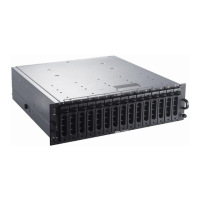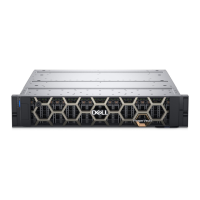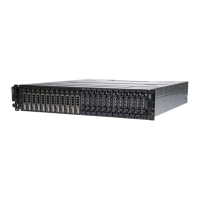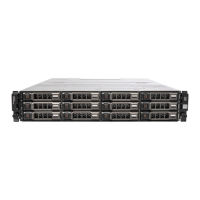A REFERENCE GUIDE FOR OPTIMIZING DELL™ MD1000 SAS SOLUTIONS VER A00
PAGE 16 5/06/2005
• RAID Level Migration
Changing the RAID level of a virtual disk from the existing level (e.g. RAID 1) to another
level (e.g. RAID 5) is called RAID level migration. Dell recommends that data in the virtual
disk be backed up before a RAID level migration is initiated. Dell also strongly
recommends that the size of the physical disks to which the RAID level is to be migrated is
greater than or equal to the size of the physical disks in the existing virtual disk. Dell
supports RAID level migration as follows:
RAID 1 to RAID 0
RAID 0 to RAID 1
RAID 5 to RAID 0
RAID 0 to RAID 5
RAID 1 to RAID 5
• Capacity Expansion
Expanding the capacity of a virtual disk by adding another physical disk is called
capacity expansion. Dell supports capacity expansion on all the supported RAID levels
except RAID 1. Dell recommends that the data in the virtual disk be backed up before
capacity expansion is initiated. For more details on capacity expansion, see the Dell
PERC 5/E User’s Guide.
• Controller Write Cache Policy Options
Write–Back Caching
In write-back caching, data transfer is completed when the controller cache receives all
data from host for the write transaction. Write-back caching is faster than write through
caching. The main advantage of write-back caching is improved performance since the
controller does not have to wait for an acknowledgement from the physical disk before
proceeding. The battery backup unit for the controller is required to enable write-back
caching. For more details on write-back caching, see the Dell PERC 5/E User’s Guide.
Write-Through Caching
In write-through caching, a data transfer is completed when the disk subsystem receives
all of the data from the host. Write-through caching provides additional security because
data must be committed to the physical disk before proceeding. There may be a minimal
performance impact since the controller must wait for the physical disk to return a good
status to the controller before proceeding to the next operation.
• Hot Spare Support
When a physical disk is assigned to a virtual disk as a hot spare, the PERC 5/E controller
will automatically rebuild the virtual disk using the hot spare in the event of a failed physical
disk. This restores the virtual disk to optimal redundancy. The hot spare disk must be
equal to or greater than the largest physical disk size within any of the virtual disks. Dell
recommends assigning hot spares to redundant virtual disks only, (i.e. RAID 1, RAID 5,
RAID 10 and RAID 50.)
Global Hot Spare
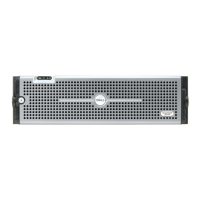
